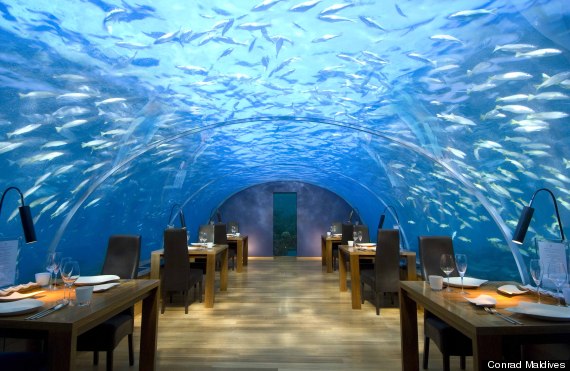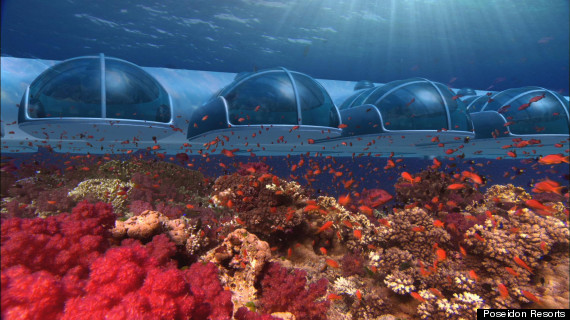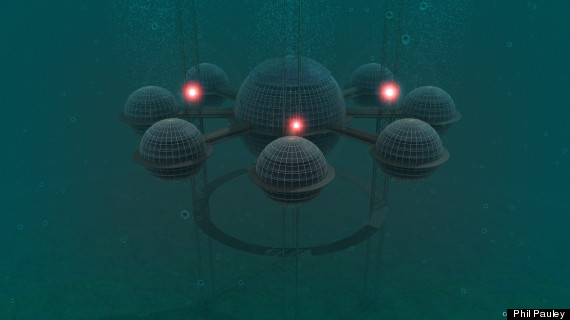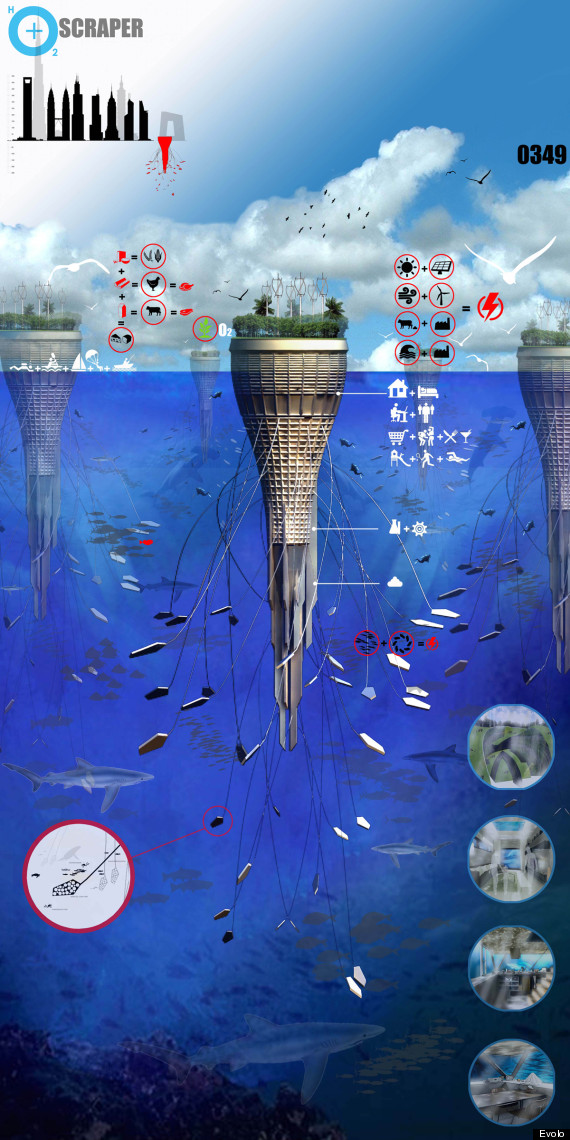According to a study published at the end of the year in Scientific Reports, climate change will push sea levels two feet higher by 2083 and eight feet higher by the year 2200. The increase would put large parts of Miami, Boston and other coastal cities underwater. The question is, by then, could we be living underwater too? Maybe so, if we can make more aqua-habitats like these come to life.
Diogenes

Before astronauts, there were "aquanauts" -- divers who lived in (and studied out of) underwater habitats, equipped with improbable "luxuries" like libraries, radios and TVs. The first of these habitats, launched off the coast of France in 1962, was Conshelf I, also called Diogenes, an enormous steel bubble 16 feet long and 8 feet wide. The world's first underwater living experiment had two "aquanauts," Albert Falco and Claude Wesly, live in the Diogenes for a week, at a depth of 33 feet.
Jules Undersea Lodge

In 1972, American oceanographer and aquanaut Ian Koblick opened La Chalupa research facility off the coast of Puerto Rico. At the time, La Chalupa (Spanish for "the Rowboat") was the largest and most advanced underwater habitat of its kind. Fourteen years later, La Chalupa was moved to the Florida coast and converted into Jules' Undersea Lodge, the United States' first and only underwater hotel. Today, guests at Jules' Undersea Lodge enjoy Wi-Fi, climate control and unlimited SCUBA supplies under the sea.
Ithaa

Ithaa, the world's first undersea restaurant, opened in 2005 in the Maldives. Based on a design incorporated into the National Science Centre Aquarium in Kuala Lumpur, Malaysia, the restaurant seats up to 14 people 16 feet below sea level. The 16-by-30-foot acrylic tube can also be rented out for weddings and as an overnight couples' retreat. Better yet, Ithaa isn't the only underwater hot spot in the Maldives -- the tiny island nation also boasts Subsix, an underwater nightclub, and LIME, an underwater spa.
Poseidon Undersea Resort

Like Ithaa, the Poseidon Undersea Resort is made almost wholly from acrylic glass -- "like relaxing in a giant fishbowl," quips men's style magazine Complex. Just $30,000 will get you a plane flight to the hotel and two nights underwater, Complex reports, but there's just one catch: The Poseidon Undersea Resort currently isn't operating, having been embroiled in finance negotiations since 2012. But that's hardly put a dent in Poseidon's popularity; the hotel's not yet open, and 150,000 people have already signed up for reservations, according to the resort's website.
Sub-Biosphere 2

If climate change sinks entire cities, most refugees won't be able to afford a spot in an underwater hotel. That's where UK-based designer Philip Pauley's Sub-Biosphere 2 comes in. Designed to be entirely self-sufficient, capable of surfacing and submerging, each Sub-Biosphere 2 would house up to 100 people. Best of all, the habitats would be movable over land by rail -- which means if a climate crisis hit, we could build some up and transport them to the seashore right quick. Of course, the idea is just a concept design for now.
Waterscraper

But let's get real -- if our cities sink, we may not be able to house people a hundred at a time. That's where huge underwater megalopolises like Sarly Adre Bin Sarkum's idea for a "Waterscraper" come in. Comparable in size to the Empire State Building, a Waterscraper would feasibly house several thousand people while generating power via enormous "tentacles" that surround the building and move with the tides. The Waterscraper would also produce its own food, combining hydroponic techniques with a surface dome that houses a small forest. Like the Sub-Biosphere 2, the Waterscraper is just a design concept currently, but with sea level rise, humanity may need to turn this idea into reality sometime in the future.